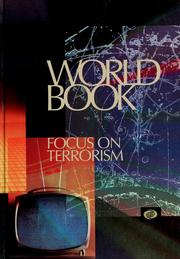| Listing 1 - 5 of 5 |
Sort by
|
Book
ISBN: 9781771126052 1771126051 Year: 2024 Publisher: Waterloo, ON Wilfrid Laurier University Press
Abstract | Keywords | Export | Availability | Bookmark
 Loading...
Loading...Choose an application
- Reference Manager
- EndNote
- RefWorks (Direct export to RefWorks)
Fragmented and hybrid in style, On Comics and Grief examines a year in comic book publishing and the authors grief surrounding his mothers death. This book connects grief, memory, nostalgia, personal history, theory, and multiple lines of comics studies inquiry in relation to the comic books of 1976. Structured around a year of comic books with a cover date of 1976, the year the author turned ten, the book is divided into an Introduction plus twelve sections, each a month of the publishing year. Two comic books are highlighted each month and examined through the interwoven lenses of creative nonfiction and comics studies. Through these twenty-four comics, the book addresses the major comic book publishers and virtually all genres of comics published in 1976. By pushing the ways in which the personal is used in comics studies, combining different modes of writing, and embracing a fragmentary style, the book explores what is possible in academic writing in general and comics studies in particular. On Comics and Grief both acts as a way for the author to process his grief and uses grief as a way to think about the comics themselves through the emotions and personal connections that underlie the work we do as scholars. --Wilfrid Laurier University Press
Book
ISBN: 9781441126412 Year: 2013 Publisher: New York : Bloomsbury Academic,
Abstract | Keywords | Export | Availability | Bookmark
 Loading...
Loading...Choose an application
- Reference Manager
- EndNote
- RefWorks (Direct export to RefWorks)
"With the recent explosion of activity and discussion surrounding comics, it seems timely to examine how we might think about the multiple ways in which comics are read and consumed. Graphic Encounters moves beyond seeing the reading of comics as a debased or simplified word-based literacy. Dale Jacobs argues compellingly that we should consider comics as multimodal texts in which meaning is created through linguistic, visual, audio, gestural, and spatial realms in order to achieve effects and meanings that would not be possible in either a strictly print or strictly visual text. Jacobs advances two key ideas: one, that reading comics involves a complex, multimodal literacy and, two, that by studying how comics are used to sponsor multimodal literacy, we can engage more deeply with the ways students encounter and use these and other multimodal texts. Looking at the history of how comics have been used (by churches, schools, and libraries among others) will help us, as literacy teachers, best use that knowledge within our curricula, even as we act as sponsors ourselves"--
Comic books, strips, etc., in education. --- Comic books and children. --- Literacy.
Book
ISBN: 9781496839107 Year: 2022 Publisher: Jackson : University Press of Mississippi,
Abstract | Keywords | Export | Availability | Bookmark
 Loading...
Loading...Choose an application
- Reference Manager
- EndNote
- RefWorks (Direct export to RefWorks)
In a 2019 interview with the webzine DC in the 80s, Jeff Lemire (b. 1976) discusses the comics he read as a child growing up in Essex County, Ontario—his early exposure to reprints of Silver Age DC material, how influential Crisis on Infinite Earths and DC’s Who’s Who were on him as a developing comics fan, his first reading of Watchmen and The Dark Knight Returns, and his transition to reading the first wave of Vertigo titles when he was sixteen. In other interviews, he describes discovering independent comics when he moved to Toronto, days of browsing comics at the Beguiling, and coming to understand what was possible in the medium of comics, lessons he would take to heart as he began to establish himself as a cartoonist. Many cartoonists deflect from questions about their history with comics and the influences of other artists, while others indulge the interviewer briefly before attempting to steer the questions in another direction. But Lemire, creator of Essex County Trilogy, Sweet Tooth, The Nobody, and Trillium, seems to bask in these discussions. Before he was ever a comics professional, he was a fan. What can be traced in these interviews is the story of the movement from comics fan to comics professional. In the twenty-nine interviews collected in Jeff Lemire: Conversations, readers see Lemire come to understand the process of collaboration, the balancing act involved in working for different kinds of comics publishers like DC and Marvel, the responsibilities involved in representing characters outside his own culture, and the possibilities that exist in the comics medium. We see him embrace a variety of genres, using each of them to explore the issues and themes most important to him. And we see a cartoonist and writer growing in confidence, a working professional coming into his own.

ISBN: 071661295X Year: 2003 Publisher: Chicago World book co.
Abstract | Keywords | Export | Availability | Bookmark
 Loading...
Loading...Choose an application
- Reference Manager
- EndNote
- RefWorks (Direct export to RefWorks)
A compendium of articles which deal with aspects of terrorism, including its history, the September 11, 2001 attacks, balancing civil rights and national security, and terrorist methods and weapons.
Civil rights --- National security --- Terrorism --- Religious aspects
Book

ISBN: 0716637553 Year: 2005
Abstract | Keywords | Export | Availability | Bookmark
 Loading...
Loading...Choose an application
- Reference Manager
- EndNote
- RefWorks (Direct export to RefWorks)
| Listing 1 - 5 of 5 |
Sort by
|

 Search
Search Feedback
Feedback About UniCat
About UniCat  Help
Help News
News